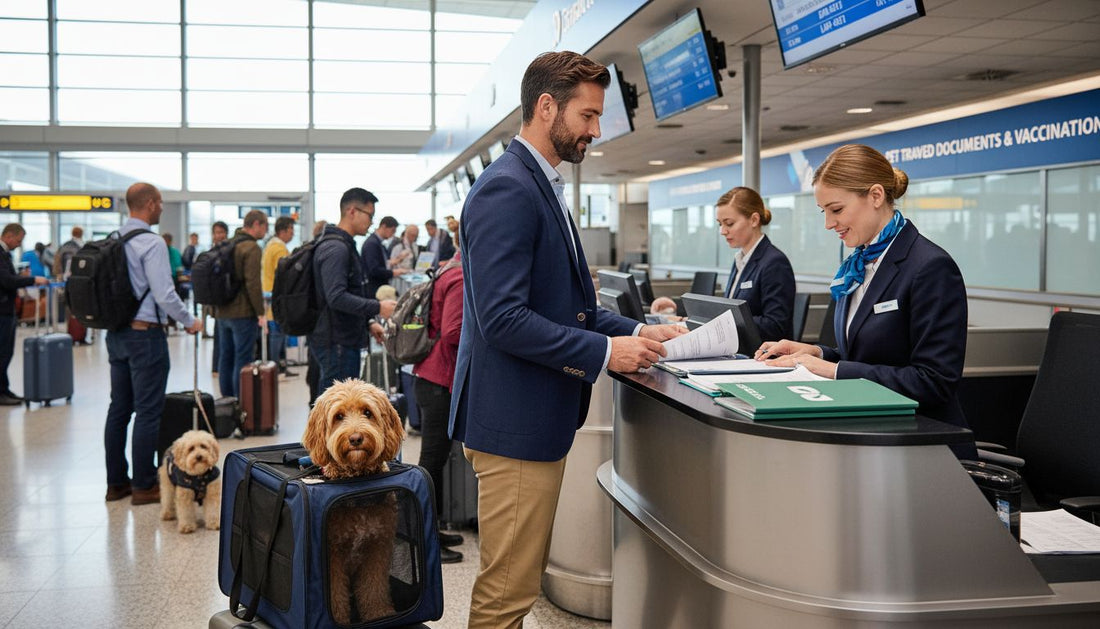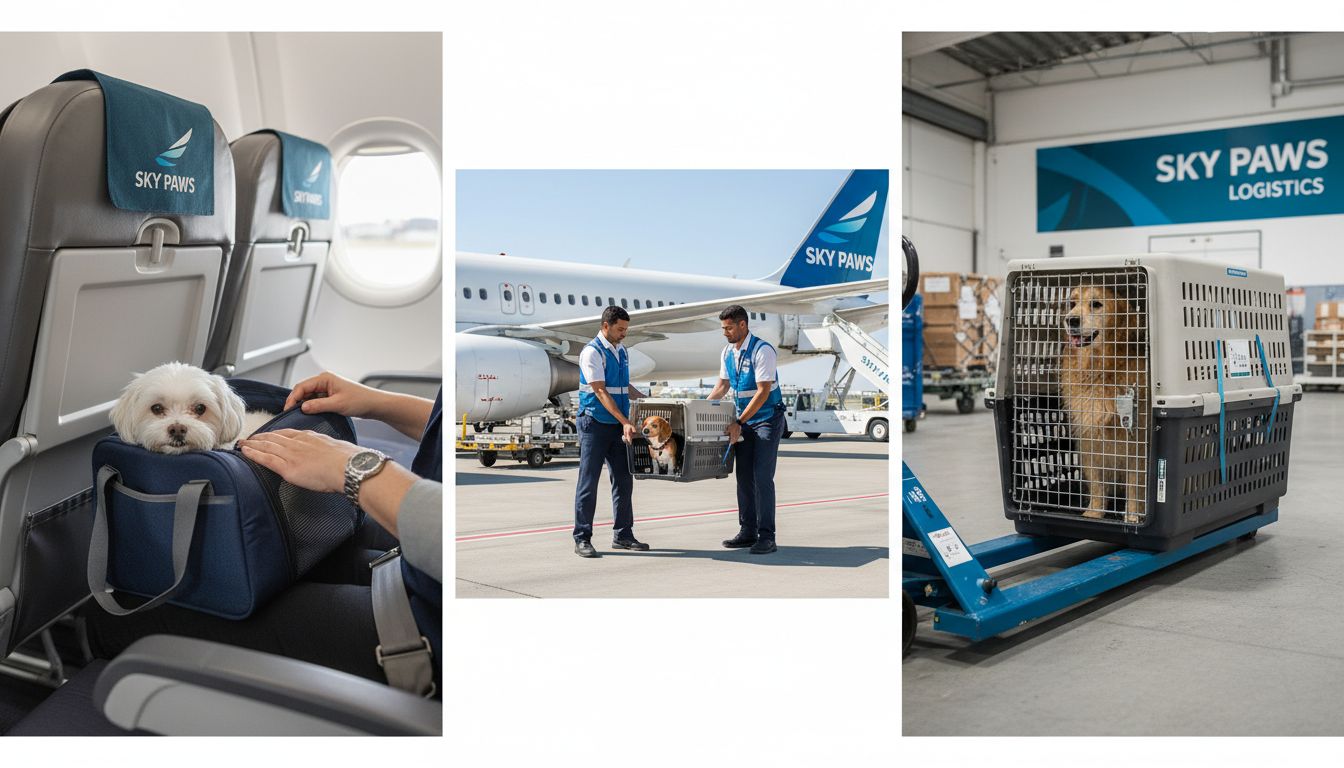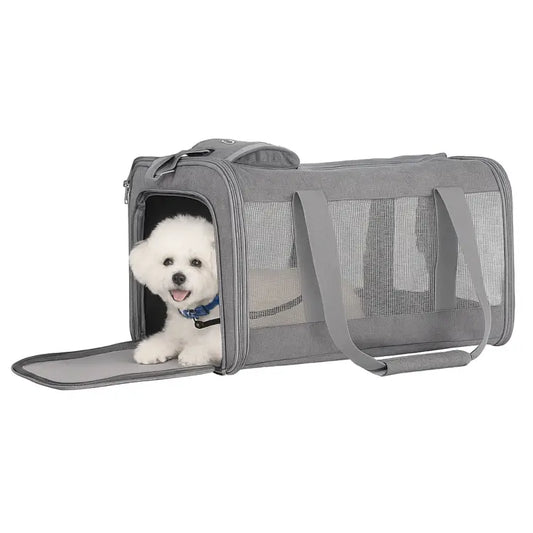
How Much Does It Cost to Fly a Dog Internationally
Share
Did you know that over 4 million pets travel internationally each year, yet most owners underestimate the complexity involved? Preparing your dog for global adventures takes far more than booking a ticket. You need to navigate a maze of health checks, airline rules, and country-specific paperwork to keep your companion safe. Understanding these essential steps and common myths can help you avoid sudden costs and stressful surprises as you plan your journey.
Table of Contents
- International Pet Travel: Core Concepts And Myths
- Types Of International Dog Transport Options
- Breakdown Of Airline Fees And Hidden Costs
- Dog Carrier And Accessory Requirements For Flights
- Legal, Veterinary, And Documentation Costs
Key Takeaways
| Point | Details |
|---|---|
| Comprehensive Documentation | Obtain a valid health certificate and ensure vaccinations are documented to meet international travel requirements. |
| Transport Method Selection | Choose the appropriate transportation option based on your dog’s size and behavior, considering in-cabin, checked baggage, or cargo services. |
| Understand Costs | Budget for various expenses including transport fees, health certifications, and import permits, as costs can vary significantly. |
| Carrier Compliance | Use an airline-approved carrier that meets strict ventilation and safety standards to ensure your dog’s safety during travel. |
International Pet Travel: Core Concepts and Myths
Traveling internationally with your dog requires careful planning and understanding of complex regulations. According to the International Air Transport Association (IATA), pet travel involves multiple layers of preparation beyond simply booking a ticket. Pet transportation is a nuanced process that demands attention to health documentation, airline policies, and specific import requirements.
Key considerations for international pet travel include comprehensive health certification, understanding specific country import regulations, and preparing your dog for the stress of long-distance transportation. The Centers for Disease Control and Prevention (CDC) emphasizes the critical importance of advance documentation and proper animal handling during international journeys. These requirements protect both animal and human health while ensuring smooth transit.
- Obtain a valid international health certificate from a licensed veterinarian
- Ensure all vaccinations are current and documented
- Check specific import requirements for destination country
- Confirm airline-specific pet transportation policies
- Prepare your dog psychologically for travel through gradual training
Most pet owners misunderstand that international travel is simply about purchasing a ticket. In reality, it involves complex logistics, potential quarantine procedures, and significant preparation. For a comprehensive breakdown of airline travel requirements, check out our guide on airline travel with pets.
Successful international pet travel requires patience, thorough research, and meticulous planning. Your furry companion’s comfort and safety should always be the top priority during these complex journeys.
Types of International Dog Transport Options
International dog transportation involves multiple carefully regulated methods designed to ensure the safety and comfort of your furry companion. According to the International Air Transport Association (IATA), pet owners have three primary transport options: in-cabin travel, checked baggage, and dedicated cargo services, each with unique requirements and considerations.
In-Cabin Travel is ideal for small dogs weighing under 20 pounds. This method allows pets to remain with their owners during the flight, providing maximum comfort and supervision. Checked Baggage Transport suits medium-sized dogs, where they are transported in a pressurized, temperature-controlled section of the aircraft separate from passenger areas.
- In-Cabin Travel: Best for dogs under 20 pounds
- Checked Baggage: Suitable for medium-sized dogs
- Cargo Services: Recommended for large breeds or unaccompanied pets
- Each option requires specific carrier dimensions and health documentation
- Airline policies vary significantly between carriers
The Centers for Disease Control and Prevention (CDC) emphasizes that regardless of transport method, proper documentation and health certificates are mandatory. When planning international travel, pet owners must navigate complex logistics. For comprehensive guidance on navigating these requirements, check out our ultimate guide to bringing your dog on a plane.
Choosing the right transportation method depends on your dog’s size, breed, health status, and specific airline regulations.
 Thorough preparation and understanding these options can make international travel a smooth experience for both you and your four-legged companion.
Thorough preparation and understanding these options can make international travel a smooth experience for both you and your four-legged companion.
Here’s a comparison of the main international dog transportation options:
| Transport Option | Suitable For | Key Requirements | Typical Fees |
|---|---|---|---|
| In-Cabin | Dogs under 20 lbs | Small carrier Health certificate |
$100-$250 |
| Checked Baggage | Medium-sized dogs | Medium carrier Current vaccinations |
$200-$500 |
| Cargo Services | Large/unaccompanied | Large crate Import permit |
$400-$1,000+ |
Breakdown of Airline Fees and Hidden Costs
International pet travel involves a complex web of expenses that often catch pet owners by surprise. According to the Washington Post, the financial landscape of flying with pets extends far beyond the basic ticket price, with multiple layers of potential costs that can quickly escalate.
Pet Transportation Fees vary dramatically between airlines, typically ranging from $100 to $1,000 depending on the destination, pet size, and transport method. The International Air Transport Association (IATA) highlights that advance booking and confirmation are critical, as airlines frequently restrict the number of animals per flight, which can impact both availability and pricing.
Key expenses to anticipate include:
- Pet transport fee ($100-$1,000)
- Health certification costs ($50-$300)
- Import permit fees ($25-$200)
- Mandatory veterinary inspections ($75-$250)
- Potential quarantine expenses ($500-$2,000)
Beyond direct transportation costs, pet owners must budget for comprehensive documentation and potential unexpected expenses. When preparing for international travel, understanding these financial nuances is crucial. For a deeper dive into navigating these complex requirements, explore our top tips for flying with a dog.
Successful international pet travel requires meticulous financial planning and an understanding that costs can vary significantly based on destination, airline, and individual pet requirements. Budgeting an additional 20-30% beyond initial estimates can help manage unexpected expenses and ensure a smooth journey.
Dog Carrier and Accessory Requirements for Flights
International pet travel demands strict adherence to carrier specifications that ensure your dog’s safety and comfort during transportation. According to the International Air Transport Association (IATA), pets must be transported in specially approved travel crates that meet rigorous design and safety standards.
Carrier Requirements are comprehensive and non-negotiable. The carrier must be well-ventilated, secure, and sized appropriately to allow the dog to stand, turn, and lie down comfortably. The Centers for Disease Control and Prevention (CDC) emphasizes that airlines will meticulously inspect these carriers to confirm they meet all health and safety standards before allowing boarding.
Critical carrier specifications include:
- Rigid, leak-proof bottom
- Adequate ventilation on multiple sides
- Secure, lockable doors
- Solid, sturdy construction
- Enough space for pet to move naturally
- Clear identification labels
- Compatibility with specific airline requirements
Beyond the basic carrier, pet owners must also prepare additional accessories like absorbent bedding, familiar comfort items, and water containers. When preparing for your journey, understanding these intricate requirements is crucial. For comprehensive insights into selecting the perfect travel carrier, explore our guide to airline-approved pet carriers.
Navigating these requirements might seem overwhelming, but careful preparation can transform a potentially stressful experience into a smooth, safe journey for your four-legged companion.
Legal, Veterinary, and Documentation Costs
International dog travel involves a complex maze of legal requirements and associated expenses that can quickly escalate beyond basic transportation costs. According to the Washington Post, pet owners must navigate a comprehensive documentation process that demands significant financial investment and meticulous preparation.
Documentation Expenses encompass multiple critical components that are non-negotiable for international pet travel. The Centers for Disease Control and Prevention (CDC) mandates thorough verification of all legal paperwork before a dog can be permitted to board an international flight, creating a rigorous and often expensive process.
Key legal and veterinary costs include:
- USDA-approved veterinarian health certificate ($75-$250)
- Required vaccinations and medical examinations ($100-$500)
- Import permit fees ($50-$200)
- Microchipping and additional identification requirements ($50-$150)
- Potential quarantine documentation ($200-$1,000)
- Translation services for medical documents ($75-$250)
The financial landscape of international pet travel extends far beyond simple transportation fees, requiring comprehensive planning and budgeting. For travelers seeking detailed guidance on managing these complex requirements, explore our complete airline travel guide for dogs.
Successful international pet travel demands not just financial resources, but also patience, attention to detail, and a proactive approach to meeting each destination’s unique legal and veterinary requirements.
Make International Dog Travel Affordable and Stress-Free with the Right Gear
Flying your dog internationally comes with many hidden costs and complex requirements that make the journey feel overwhelming. From airline fees to health certificates and import permits, managing expenses while ensuring your pet’s comfort is a real challenge. One crucial step that many travelers overlook is choosing the right airline-approved dog carrier designed to keep your furry friend safe and calm throughout the trip.

Discover the difference a high-quality, airline-approved carrier can make by exploring our selection of Best Airline Approved Dog Carriers | In-Cabin Travel Bags – Yappyboo. These carriers are carefully crafted for durability, lightweight comfort, and compliance with airline policies. Don’t risk costly delays or stressful situations—invest now to protect your pet and save money on unexpected expenses. Visit Yappyboo.store today and take the first step toward a smooth, worry-free international journey for your dog. For more options tailored to travel convenience, check out our Airline-Approved Dog Carriers | In-Cabin Travel Bags – Yappyboo and see why pet owners trust us for their travel needs.
Frequently Asked Questions
How much does it typically cost to fly a dog internationally?
The costs can range significantly, typically from $100 to $1,000, depending on factors like the dog’s size, transport method, and destination.
What are the primary expenses involved in flying a dog internationally?
Key expenses include pet transport fees, health certification costs, import permit fees, and potential veterinary inspections or quarantine expenses.
Are there any hidden costs when traveling with a dog internationally?
Yes, pet owners should anticipate additional expenses such as health certification fees, mandatory veterinary inspections, and potential quarantine costs, which can add up to 20-30% beyond the initial estimates.
What are the documentation requirements for flying a dog internationally?
Documentation typically includes an international health certificate from a licensed veterinarian, proof of vaccinations, and compliance with any specific import permit requirements of the destination country.





